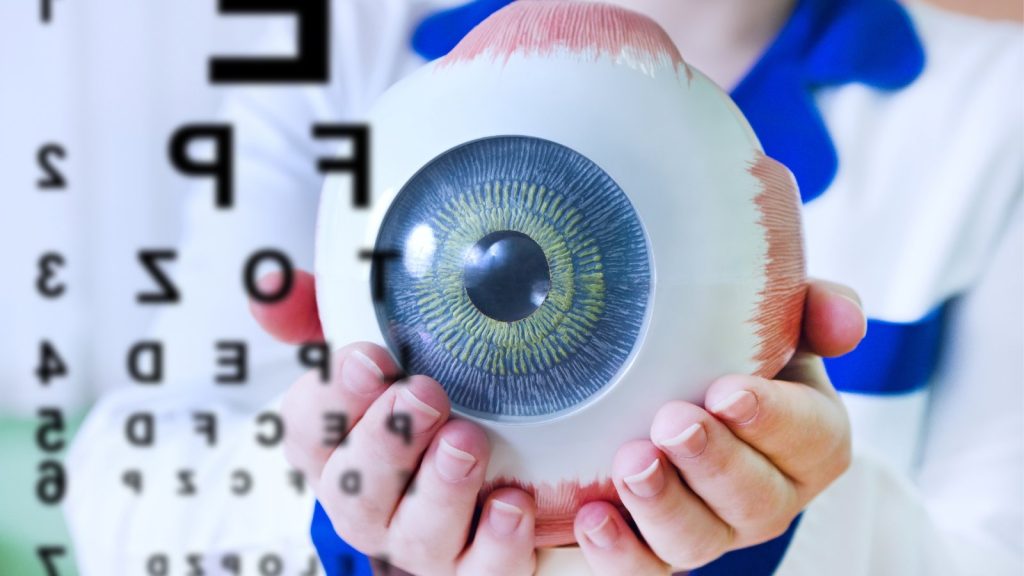Checking Out the Cutting-Edge Technologies Used for Vision Correction
In the ever-evolving landscape of vision modification technologies, a world where advancement and accuracy assemble, a myriad of cutting-edge innovations have improved the possibilities for improving visual skill. From the elaborate realm of innovative laser treatments to the realm of artificial intelligence applications and genetics therapy advancements, the field remains to push limits and redefine what was when believed to be unattainable. With each development comes the possible to transform exactly how we view and address vision-related challenges, supplying a tantalizing look right into a future where clearness and precision preponderate.
Advanced Laser Treatments
Another advanced laser treatment acquiring popularity is PRK (Photorefractive Keratectomy) This method includes removing the external layer of the cornea before improving it with a laser. While the recuperation time for PRK is much longer contrasted to LASIK, it can be a far better option for people with thin corneas or various other corneal abnormalities. Both LASIK and PRK have high success rates in enhancing vision and are considered safe and trusted methods for vision adjustment.

Implantable Instruments Advancement
Advancements in implantable tools are reshaping the landscape of vision improvement, using brand-new possibilities for individuals seeking irreversible options to refractive mistakes. These advanced tools, such as phakic intraocular lenses (IOLs) and implantable collamer lenses (ICLs), are created to remedy a variety of refractive mistakes, consisting of nearsightedness, hyperopia, and astigmatism. Unlike conventional glasses or call lenses, implantable tools provide an even more permanent solution by being placed inside the eye to fix vision.

Wavefront Modern Technology Enhancements
The evolution of wavefront innovation in vision correction has actually changed the accuracy and personalization of refractive treatments. By using sophisticated wavefront sensing units, this technology permits an in-depth evaluation of the eye's special aberrations, allowing ophthalmologists to customize treatments with unmatched precision. Wavefront-guided LASIK, as an example, goes beyond standard techniques by attending to not just usual refractive mistakes like nearsightedness, farsightedness, and astigmatism yet also higher-order aberrations that can influence aesthetic high quality.
In addition, continuous improvements in wavefront innovation have actually led to enhanced analysis capacities, allowing for a lot more specific pre-operative assessments and post-operative assessments to check the performance of the treatment. On the whole, these enhancements in wavefront technology have actually considerably contributed to the improvement and effectiveness of vision adjustment procedures, offering clients a higher degree of visual acuity and quality post-treatment.
Artificial Knowledge Applications
With the development of wavefront technology in vision correction paving the way for customized therapies, the integration of expert system applications is now poised to basics additional augment precision and performance in refractive treatments. Expert system (AI) brings a brand-new degree of class to the field by evaluating substantial amounts of data to enhance decision-making processes throughout vision improvement surgical procedures. AI formulas can assist eye doctors in pre-operative preparation by predicting the optimum therapy parameters based on specific patient information, such as corneal thickness, refractive mistake, and various other pertinent factors. During the operation, AI can dynamically readjust therapy criteria in real-time, optimizing the precision of the improvement. In addition, post-operative monitoring and modification can additionally take advantage of AI applications, making web link sure far better end results and minimized threats of complications. By leveraging AI in vision adjustment procedures, ophthalmologists can use patients individualized treatments that are not only extra exact yet additionally tailored to their unique aesthetic needs, ultimately leading to improved person complete satisfaction and visual end results.
Gene Treatment Developments
Current advancements in genetics treatment have introduced a brand-new age of precision medication, transforming the landscape of clinical therapies. In the realm of vision improvement, gene therapy advancements provide encouraging options for numerous hereditary eye problems. By targeting particular genetics in charge of problems like retinitis pigmentosa, Leber hereditary amaurosis, and various other genetic retinal conditions, genetics therapy aims to address the origin of these conditions at a molecular degree.
One remarkable development learn this here now in gene treatment for vision correction is Luxturna, approved by the FDA in 2017. Luxturna is a pioneering gene therapy treatment for people with acquired retinal diseases triggered by mutations in the RPE65 genetics. Through the distribution of a practical copy of the RPE65 gene right into retinal cells, Luxturna has actually revealed substantial enhancements in vision for individuals with these genetic problems.
As study in gene therapy continues to advance, the capacity for tailored therapies for a range of genetic eye disorders grows significantly, using expect boosted vision end results and lifestyle for afflicted people.
Verdict
Finally, the visual field improvement is constantly evolving with the use of sophisticated innovations such as innovative laser treatments, implantable gadgets, wavefront innovation, expert system, and gene therapy. retina service near me. These advancements have transformed the means vision issues are resolved, offering even more accurate and effective options for patients. As technology proceeds to breakthrough, we can expect also extra developments in the future that will even more enhance the quality of vision improvement treatments